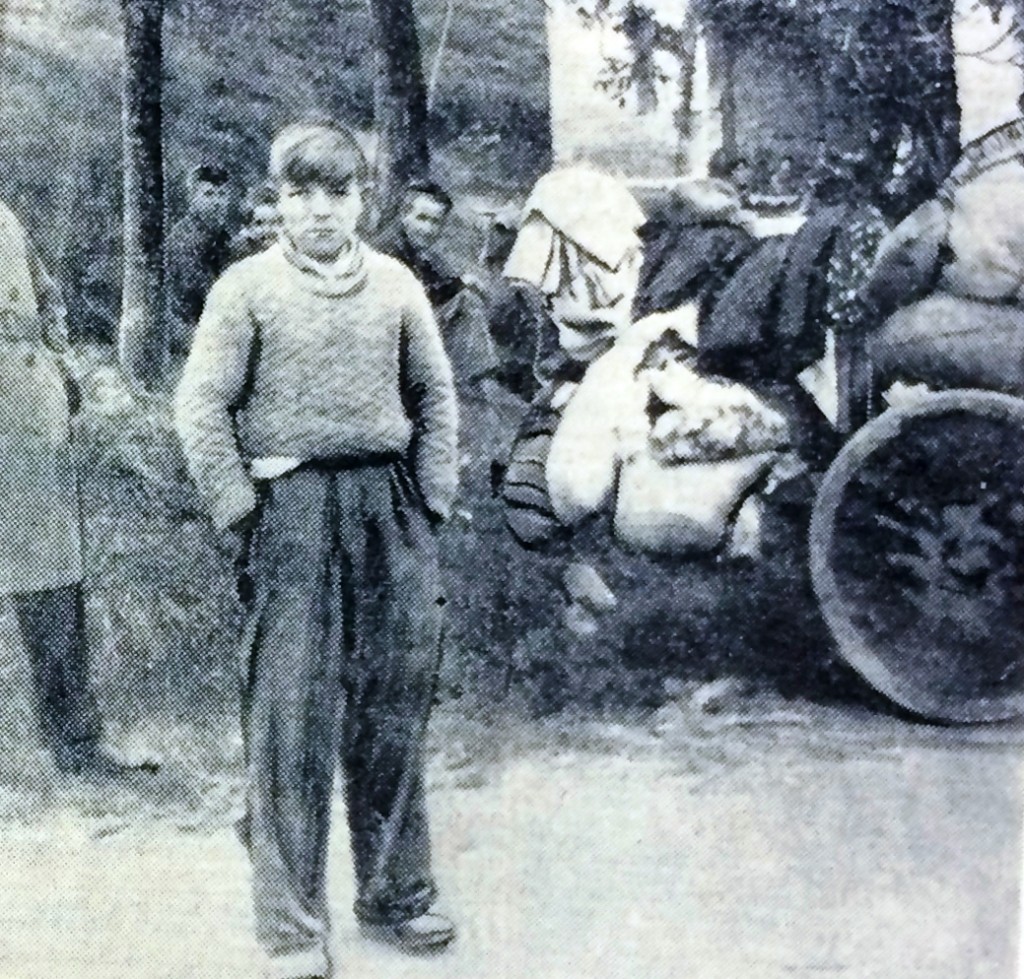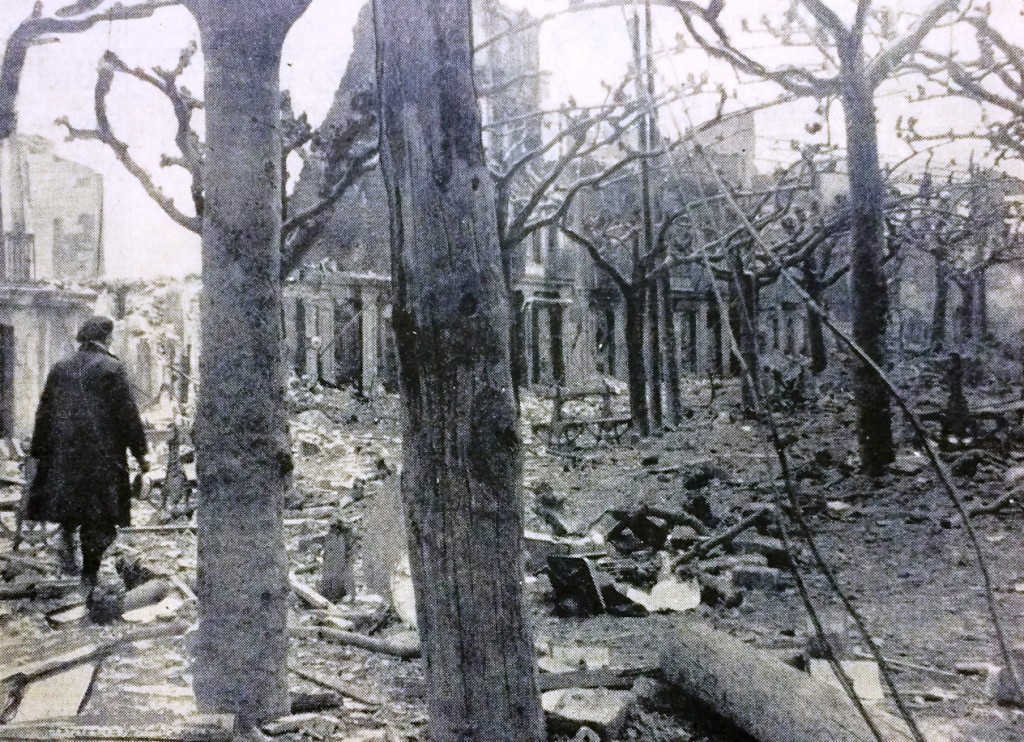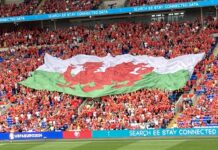This article was translated by John R. Bopp
First article in a series of three we’re dedicating to the posts by in the Tyne & Wear Museum’s blog on the relationship between Newcastle and the Basque during the Spanish Civil War.
————————
The British newspaper Shields Gazette, founded in 1848, tells the story of sailor Norman Ramsey and his photographs showing the consequences of the fascist Bombing of Guernica. The article, signed by Janis Blower, is based on another article, penned by Sarah Richardson, who has been published in a blog run by the Tyne & Wear Museum, tying in with the exhibit “Conscience and Conflict: British Artists and the Spanish Civil War”, which can be seen through June 7 at the Laing Art Gallery.
It’s an extraordinary story that brings together the bravery of the sailors who broke through the fascist blockade to help the Basque populace surrounded by Franco’s insurgent troops, and the desire of the Basque authorities to make sure the world knew the atrocities fascism was committing against the Basque populace.
We’ve already spoken about how British sailors broke through the blockade of the insurgents’ ships to get to the Port of Bilbao–especially of the bravery of one Welsh captain, Davey “Potato” Jones. In that article, we also discussed the short memory of the British authorities, who also refused to help the legitimate Basque authorities, and who refused to remember the sailor, a Basque nationalist, who put up his whole fleet for the British in the First World War (and in so doing, losing many of his ships). It was this same British Government who, a few years later, would refuse to take in the Basque refugees.
Fortunately, as we’ve said many times before, the Government is one thing, and British society another. It was also different with the sailors who broke the blockade to take supplies to the encircled Basque populace and who, with their activism, forced the British Government, which sympathized with fascist Franco, to take in 4,000 Basque War Children.
In the story we hear from these sources, the extraordinary bravery of the British sailors is joined by the commitment of that country’s civilians and the impact the Bombing of Guernica had internationally, which was told to the world by George L. Steer for The Times and The New York Times, and by Noel Monks for the Daily Express. This was a combination that finally made it possible to open the doors of “safe Great Britain” to those 4,000 children, as we are told in an extraordinary way by journalist and author Nicholas Rankin. He does so in an article we talked about in a post we put up in honor of all those people and their solidarity, with a very special title: The Bombing of Guernica, Goodwill Shines Brightest When Surrounded by the Blackest Evil.
But going back to today’s story. Normal Ramsey, from South Shields, had arrived in Bilbao on April 23 aboard the Hamsterley with food for the populace. They entered after a complicated journey due to the insurgents’ boats which almost caused an incident between them and the British Navy in international waters. They brought in a total of 8,000 tons of food aboard the three boats which broke the blockade that day: the Macgregor, the Hamsterley, and the Stanbrook. They entered the Bilbao estuary escorted by two Basque boats and a cheering crowd.

There, the Basque authorities, the Government of Basque President Aguiire, aware of the difficulties there had been in getting the news out to the world about the viciousness and cruelty of Franco’s troops, invited the British sailors to visit some of the areas devastated by the insurgents’ attacks. Those men, who walked towards the front (facing incredible danger) in order to see first-hand the consequences of the first massive bombardment on a civil population. They got to Guernica in time to see it in ruins, just before the rebel troops occupied it and tried to hide the evidence of that immoral and unspeakable act.
Norman Ramsey took photos of the refugees that he found on the road from Guernica to Bilbao and of the city in ruins. He, just like Steer and Monks, sided with Truth and Justice and spoke about what he had seen, undoubtedly collaborating, at least as far as the refugee children were concerned, to get the British Government, obliged by popular demand, to abandon the shameful passiveness that democratic Europe kept throughout the fascist uprising in Spain.
They are also truly Friends of the Basques
Eskerrik Asko / Thank you
We leave you with the two articles that tell this story, the website of the exhibit at the Laing Art Gallery, and a virtual visit to this museum on Google’s The Culture Institute.
Shields Gazette – 11/5/2015 – Gran Bretaña
South Shields seaman captured Spanish Civil War on film
THE most iconic image associated with Guernica – the Basque town bombed during the Spanish Civil War in 1937 – is Picasso’s famous painting of the same name. But photographs also captured the devastation caused by the raid – yet who would have thought that some of them would be the work of a South Shields merchant seaman? His name was Norman Ramsey, and he was among the crew of the Newcastle steamer Hamsterley, which had docked three days earlier, with a cargo of food, in the port of Bilbao. Norman used his camera to photograph refugees on the road from Guernica, as well as some of the town’s shattered buildings.
(Continue) (Automatic translation)
Tyne & Wear Archives & Museums – 175/2015 – Gran Bretaña
Newcastle foodship crew witness the devastation of Guernica bombing in the Spanish Civil War
This photograph of refugees on the road from Guernica was taken by Norman Ramsey of South Shields shortly after the city was bombed on April 26th 1937. He had arrived on the Newcastle steamer Hamsterley,which had docked in Bilbao three days earlier with a cargo of food for the starving Basque population. The bombing of the ancient city of Guernica was carried out by German aircraft in support of the Nationalist leader General Franco during the Spanish Civil War (1936-39). The war began after the Nationalists launched violent assaults to overthrow the democratically elected Republican government.
(Continue) (Automatic translation)
The Laing Art Gallery – -Gran Bretaña
Conscience and Conflict: British Artists and the Spanish Civil War
Featuring works by artists including Picasso, Henry Moore, Edward Burra, Wyndham Lewis and John Armstrong, amongst others, this exhibition reveals how a generation of British artists were drawn into the Spanish Civil War. While many went to fight in the war themselves, others created posters campaigning for aid for refugees, or created works that made fierce political statements.
(Continue) (Automatic translation)
Virtual tour with Google to The Laing Art Gallery
Last Updated on Apr 25, 2022 by About Basque Country































